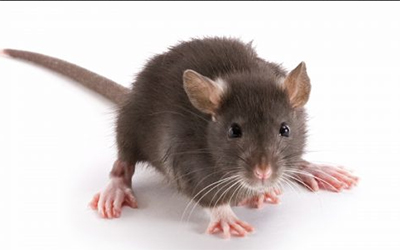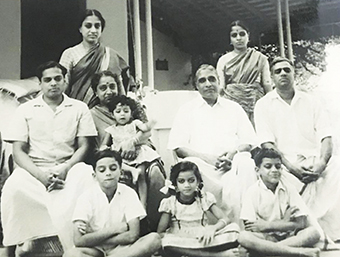Periya Govindaswamy Naidu (1858 – 1916) was a real life hero. He treated a number of plague affected people in 1903. The good Samaritan moved around with his set of native doctors – Sodalamuthu and Bhashyakarulu in order to help the sick. A dalit assistant would keep him company. His horse was famous too. He advised people not to move out for he felt that the new location could be even worse due to the lack of sanitation. Therefore people were advised to stay on without the knowledge of the authorities. Periya Govindaswamy Naidu was fined for this act and he gladly paid the Rs.50 instantly with a smile on his face. He used to have a mini pharmacy at his residence and people used to seek him and get cured from maladies. Many years after his times, his descendants built the G.Kuppuswamy Memorial Hospital in the sacred memory of his son in 1952.
On another instance Sivakavimani C.K.Subramania Mudaliar (1878 – 1961) had to move over to Ramanathapuram (Coimbatore) from Vysial Street during one more attack of plague. One Siddha Vaidhyar, Murugaiya Pandithar had treated him for the same. Meenakshi Ammal, the wife of C.K.Subramania Mudaliar took a lot of risk in order to help the afflicted. We have to salute this noble lady. The dreaded plague afflicted Coimbatore on a number of occasions – 1903, 1909, 1917 and 1942. It took away thousands of people on each occasion. So much so that the population went to just 47000 in 1911. More than 3500 people were lost each time due to this dreaded disease.
The Government of day took some pro active and tough steps in order to fight the menace. They appointed one Abdul Hafiz Sahib as the authority in Coimbatore for a salary of Rs.500. He used to carry his food and move around the city. Every dirty place was cleared immediately. His work was commendable. This officer was mobile all the time and he made the city cleaner and safer. His horse drawn vehicle used to be a sight to behold. The people were grateful to him. Those were times when the officials supplied rat traps with sweetened poison. This helped in the reduction of plague. People were vaccinated and they had to undergo some issues due to the same. Therefore men were paid 6 annas, women 3 annas and kids 2 annas for getting vaccinated. Plague police aided the regular police and these specially appointed people were paid Rs.5 per month. People leaving town had to be medically cleared and a passport like travel permit was issued to them. They had to report to the sanitary officer at the point of their destination and get checked thoroughly before mingling with anyone. The rich therefore took to pilgrimages. Kovai Khadar Ayyamuthu and his family went on a pilgrimage during the times of plague. The ones who entered the home of the plague victim was sentenced to 6 months imprisonment.
People turned to God for support. The Plague Mariamman Temple located in between Raja Street and Vysial Street was much sought after in the twentieth century. The temple is older but got the name ‘plague’ attached to it. In fact the gundam (fire walk facility) is located in the market parking lot adjacent to the temple and once a year the place is closed in order to facilitate the gundam festival (fire walk). There used to a Theppakulam meant for the city deity Goddess Koniamman. It had to be closed due to plague. The place was not kept properly. Nowadays it has been made into a parking lot (next to the former Hotel Guru BBH near the Tower Clock). The Badrakaliamman Temple (One of the nine sacred sisters of Coimbatore) in Thoraiyar Veedhi has an old vessel which normally contains holy water for the sick. People used to collect it from the temple and give it to the patients. The ‘Thee Chattees’ (fire pots), gundams etc., helped people to clean up the place and the heat along with neem, turmeric and fire acted as a sanitizer.
Asoka M.K.Krishna Chetty and his family moved over to a new place at the time of plague. Nachiyarammal Krishna Chetty had been an artistic person. The newly married Lalitha Bai Krishnan who lived next door picked up her craft skills from Nachiyarammal. This happened in the year 1942. In fact a nicely made bead bag was always with Lalitha Bai Krishnan. Members of the Radhakrishna Mills family moved over to a house belonging to the Lakshmi Mills family on Avinashi Road during a plague which afflicted the city. The plague and other infectious diseases made the Government to create new localities. Rathinasabapathypuram, Ramnagar Hafizpet, Devangapet, Cox Town, Grey Town, Gopalapuram etc., came up thereafter. Some of them took place due to private effort while the bigger ones were because of the initiative taken by Diwan Bahadur C.S.Rathinasabapathy Mudaliar (1886 – 1956), the great leader who served as the Municipal Chairman for 15 years (1921 – 1936).
Small Pox was the other dreaded disease and it took away many lives. It was called ‘Periya Ammai’ and people were quarantined in their homes. They were given mild food and none except the attender was let near them. The patient was made to lie down on a banana leaf. R.Krishnan, the first son of P.A.Raju Chettiar (1895 – 1984) and Rajalakshmi had been afflicted by small pox and he was looked after by his grandmother Subbulakshmi Ammal during the period of duress. His cousin Saraswathi (daughter of P.A.Ramaswamy Chettiar & Ranganayaki) had also been sick and she passed away. Therefore Krishnan had been nursed in a separate house which was fully isolated. Vaccines were given to everyone later and one could see the advertisements which spoke about a huge cash prize for anyone who could identify a person with small pox. The authorities had done their job.
The authorities used to announce measures through a ‘Dandora’ (a drum) at the time of plague for there did not exist a social media. The other issue was TB and the people got together and built the T.A.Ramalingam TB Sanitorium at Perundurai. Dr.N.Jaganathan created a TB Sanitorium in Coimbatore those days. A.T.Devaraja Mudaliar sponsored a TB treatment facility in the Government Hospital on Trichy Road. During the later years G.T.Gopalakrishna Naidu was known for working hard at the times of temple festivals. He used to inoculate people by the thousands tirelessly festival after festival.
Nail cutting and disposal of the cut nails were carefully done. One had to wash the hands and legs before entering the house. The hands and legs had to cleaned every time before a meal. They used to state that it was inauspicious if one did not wash themselves properly and that hygiene would invite Goddess Lakshmi home.
The Bubonic Plague or Black death swept Europe for sometime from 1343 and it swallowed a third of the population. Therefore officials of the Venetian controlled port city in Adriatic (Ragusa which is now Dubrovnik in Croatia) made the ships wait on the seas for 30 days before letting goods or people ashore. This practice was adopted in Marseilles and other places too. It became popular within a century and the period got extended to 40 days. The word ‘Quarantine’ in English has its origin here for quaranta means 40. During biblical times, citizens afflicted with plague or leprosy were isolated. Since Saint Lazarus happened to be the patron Saint of the people afflicted by leprosy. The isolation centres for plague afflicted were thus known as ‘Lazarettos’ in Europe.
India has been inhabited for a long time. The warm weather, herbs in the forest and habits have aided the people a lot. Vegetarian food and madi (clean and pure habits) of the orthodox evolved based on experiences with diseases. The puranams guide the people in this regard. The calls of nature and waste disposal thereof are vividly explained. Orthodox households had the toilets at the back of the house and one had to change the clothes before going to the toilet. They would wear ‘toilet clothes’ and then shift to regular clothes later. Hair cut and shaving was done with much care. One had to sit separately and could not touch anything after a hair cut. He would have to wash his mouth and someone would have to pour water on him and his clothes. The clothes were to be washed separately.
The food at home had to served with the right hand only. Therefore self service was not possible. One could not lick the plate or touch the tumbler with their lips. All the vessels were kept separately and washed. Vessels used for cooking and vessels used for eating were segregated and washed in different places. Clothes of the sick were washed separately. In fact the clothes of the ones who were very sick were burnt and destroyed after their recovery. People used to visit the Dandu Mariamman Temple after recovery from pox. The kolams, disposal of old food, flowers and not using the bed after getting ready for the day were part of daily life. Cleaning the wood fired stoves and applying dung paste on them was part of our health tradition. Subsequently a kolam was put on the place before cooking every morning. Social distancing was practiced and the ones who were yet to have a bath could not touch the ones who had bathed. They could also not eat or enter the kitchen or the prayer room without bathing. Fresh clothes were placed in the bathing area on the earlier day itself. People would not go near or touch another person unnecessarily. They greeted each other with a simple ‘Vanakkam’ or ‘Namaste’ and this traditional greeting method has been in our country for millennia. Hygiene, health and disposal of non vegetarian waste had kept a lot of people vegetarian. The fasts, pilgrimages, poojas and festivals were times when hygiene and abstinence helped people stay healthy. The vegetarian people would offer their food to everyone but would not eat food made by the ones eating non vegetarian even if the food offered was vegetarian. Essentially, it had to come from a vegetarian kitchen.
People from the Coimbatore region faced a lot of water issues. However this never came in the way of hygiene. The old lanes abutting Vysial Street continue to be clean because of the efforts of the local populace. The experiences from the epidemics of the past are important for they would surely help us move ahead healthily.
—Rajesh Govindarajulu
The Epidemic That Raged Coimbatore





My father m.joseph of jm english bakery told me during the year 1942 he was baking large quantity of bread in 3 fire wood ovens and supplied the army.this bread was distributed to the malties evaqeves who lived in the forest college row houses.these refugees have installed mary of saint lourdes at the st.john the brito church at lawley road junction.in the time of plague people use to pray to mary of saint lourds.
Hello. And Bye.
[url=https://google.com/aasgdhjhgasjfajsd#]google404[/url]
hjgklsjdfhgkjhdfkjghsdkjfgdh